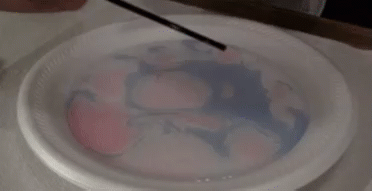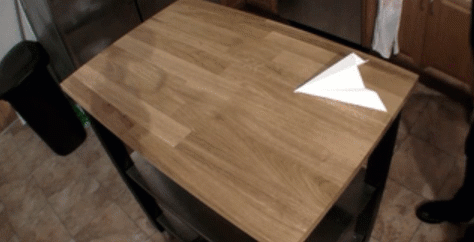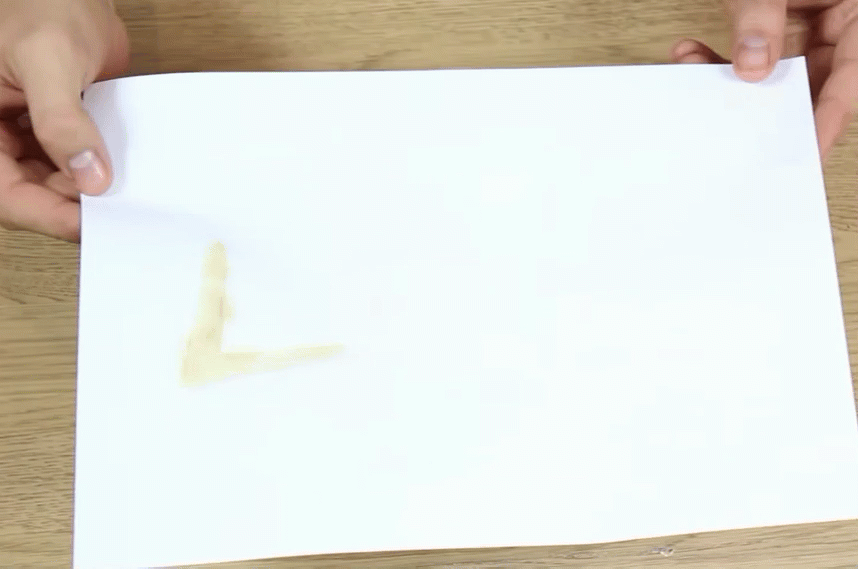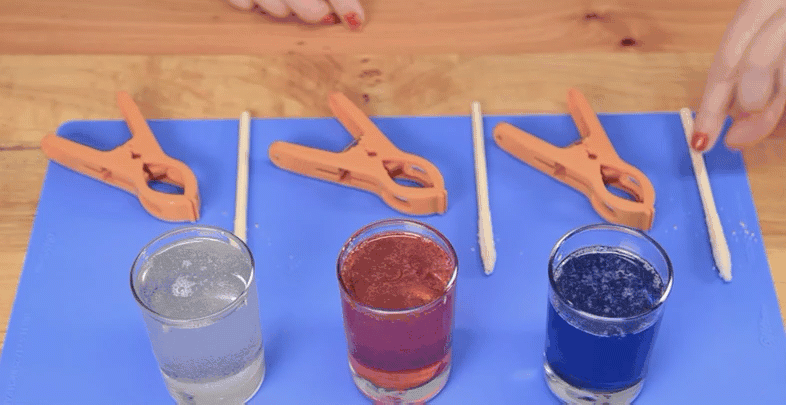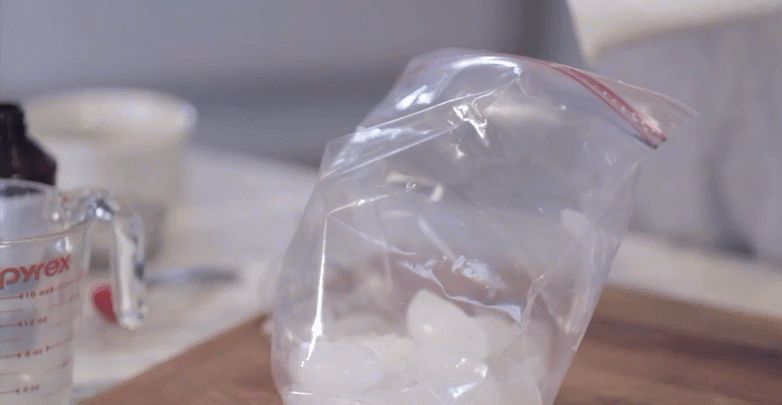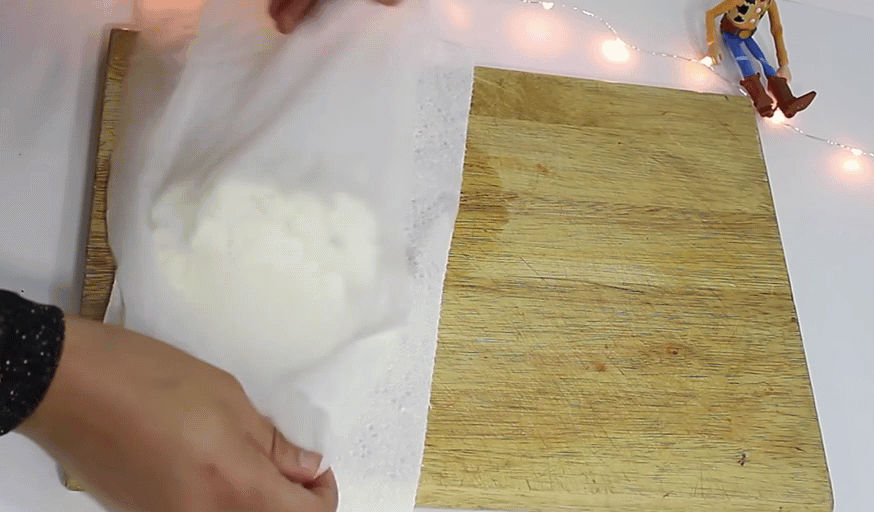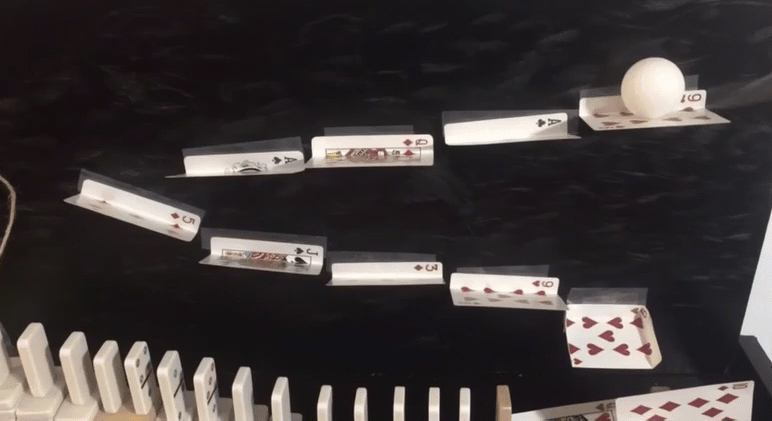If you’ve done all of the arts and crafts you can possibly handle with your kids, why not shift the at-home activities to a different challenge for your kids’ brain. Working through science experiments is not only a great way for a kid to have fun getting things a little messy, but it’s also a great way to develop their critical thinking skills. Try some of these science experiments out with your family.
 Surface Tension Art
Surface Tension Art
What You Need
Acrylic paints
Straws, small paintbrushes, or short pieces of yarn
A toothpick
Water
A plate or plastic container
Dish soap
Artists’ paper (sketchpad paper, watercolor paper)
Cups or containers for paint and soap
How it Works
Surface tension is a property of the surface of a liquid that allows it to resist an external force. Water molecules hold on tightly to each other. They don’t want to separate. They especially cling to each other at the surface because there is no water molecule on the other side of them to grab on to. Surface tension keeps the paint from sinking (mostly). This is how water beetles stay on the surface of ponds and rivers without sinking!
Check out the full instructions here.
Paper Hovercrafts
What You Need
Square Paper
How it Works
We all love paper airplanes. This experiment explores how air pressure can have an effect on the flight of a paper airplane. When you fold it in a specific way, the pocket underneath traps air and creates a zone of high pressure. Further, the air moving above has lower pressure. This difference creates lift and gets rid of the friction that normally holds the paper in place on the table. When you remove the friction of air, it doesn’t take much of a breath to make the plane move.
Check out the full instructions here.
Invisible Ink
What You Need
Lemon Juice
Small Bowl
Cotton Swab
White Construction Paper
Blowdryer
How it Works
Lemon juice is mildly acidic and acid weakens paper. The acid remains in the paper even after the juice has dried. When the paper is heated up, the acidic parts of the paper burn or turn brown before the rest of the paper does. It’s not just lemon juice either—try it with milk, white wine, vinegar, apple juice, or orange juice and see which is the best ink.
Check out the full instructions here.
Make Rock Candy
What You Need
Water
Sugar
A Clothespin
Pot for Boiling
A Few Wooden Sticks
How it Works
The string will provide the surface on which the crystals will grow. By heating up a saturated solution of sugar and then letting it cool again, you’re created a supersaturated solution of sugar. It’s unstable because it contains more sugar (a solute) than can stay in liquid form. As water evaporates from the string, it becomes even more saturated with sugar and therefore forming small crystals of sugar on the string. These tiny seed crystals provide starting points for larger crystals. The rock candy crystals grow molecule by molecule. The finished rock candy will be made up of about a quadrillion (1,000,000,000,000,000) molecules attached to the string!
Check out the full instructions here.
Make Ice Cream
What You Need
Sugar
Milk, Cream, or Half and Half
Vanilla Extract (or other flavoring)
Salt
Gallon-sized Ziploc bag
Pint-sized Ziploc bag
Ice to Fill Gallon-sized Bag Halfway
How it Works
Salt lowers the temperature at which water freezes—or the freezing point. So with salt, ice will melt even when the temperature is below the normal freezing point of water. That’s why you see salt all over the roads and sidewalks in the wintertime when it’s snowing. In order for the ice to melt, however, it has to absorb heat from its surroundings like the ice cream in the bag. The ice pulls the heat away from the ice cream to melt which allows the ice cream to freeze. Ice cream is also a compound. Once all the ingredients of the ice cream are mixed together they are bound together. The ingredients are chemically combined and cannot be separated by physical means like a mixture. To separate the ingredients in a compound there would have to be another chemical reaction.
Check out the full instructions here.
 Turn Milk Into Plastic
Turn Milk Into Plastic
What You Need
Milk
Stove and Pan or Microwave and Container
White Vinegar
Strainer
Paper Towels
Spoon
Worksurface Safe to Get Damp
Optional: Food Coloring, Glitter, or Markers
How it Works
When you add vinegar to your milk, it changes the acidity levels. The heat on the stove speeds up the reaction, and the casein proteins in the milk begin to separate and clump together—or coagulate—unfolding and reorganizing into a long chain called a polymer. Poly means many—and for good reason, because it’s a collection of all the single molecules (or monomers). This long chain of molecules causes high molecular weight, which is why you can scoop the casein out and knead it like a dough.
Check out the full instructions here.
Rube Goldberg Machine
What You Need
Anything in Your House!
How it Works
Rube Goldberg Machines solve a simple task in the most overcomplicated, inefficient, and hilarious way possible. By making your own, you’ll experience how energy can be converted through a series of interactions. They could be pushes, pulls, collisions, or any other way you can convert energy from one object to another.

